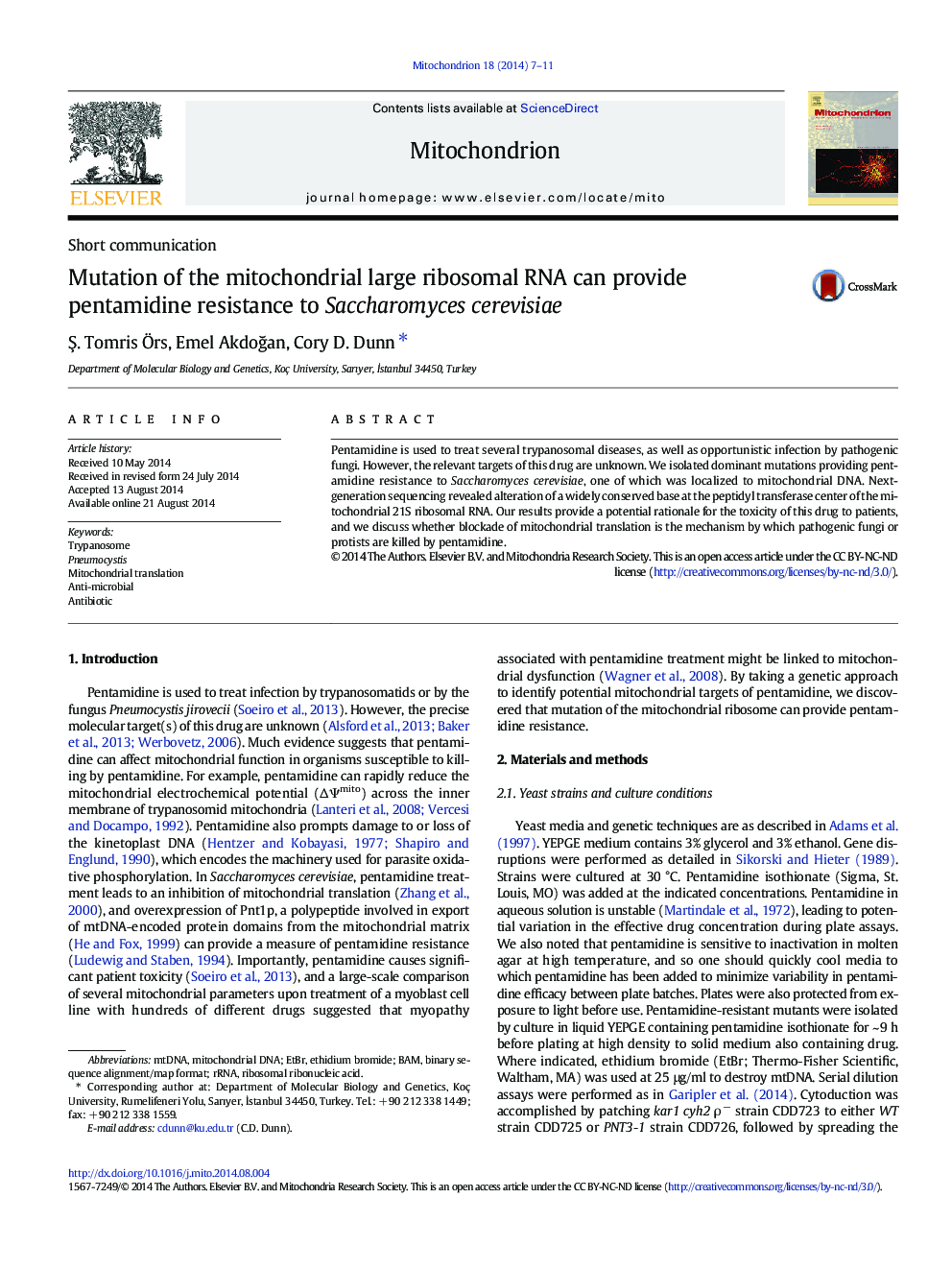| Article ID | Journal | Published Year | Pages | File Type |
|---|---|---|---|---|
| 8399268 | Mitochondrion | 2014 | 5 Pages |
Abstract
Pentamidine is used to treat several trypanosomal diseases, as well as opportunistic infection by pathogenic fungi. However, the relevant targets of this drug are unknown. We isolated dominant mutations providing pentamidine resistance to Saccharomyces cerevisiae, one of which was localized to mitochondrial DNA. Next-generation sequencing revealed alteration of a widely conserved base at the peptidyl transferase center of the mitochondrial 21S ribosomal RNA. Our results provide a potential rationale for the toxicity of this drug to patients, and we discuss whether blockade of mitochondrial translation is the mechanism by which pathogenic fungi or protists are killed by pentamidine.
Keywords
Related Topics
Life Sciences
Biochemistry, Genetics and Molecular Biology
Biophysics
Authors
Å. Tomris Ãrs, Emel AkdoÄan, Cory D. Dunn,
